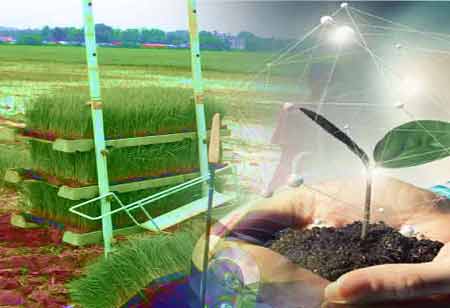Thank you for Subscribing to Agri Business Review Weekly Brief
Automatic Irrigation Equipment Market Analysis 2023-2027
Between 2023 and 2027, the market for automatic irrigation equipment is anticipated to grow at a CAGR of 15.92 per cent.

By
Agri Business Review | Monday, December 04, 2023
Stay ahead of the industry with exclusive feature stories on the top companies, expert insights and the latest news delivered straight to your inbox. Subscribe today.
Discusses the market drivers, trends, product and end-user segment analysis of the automation irrigation market that is sustainably transforming agricultural practices.
FREMONT, CA: Between 2023 and 2027, the market for automatic irrigation equipment is anticipated to grow at a CAGR of 15.92 per cent. The market will increase by $2.9 billion. The expansion depends on several variables, including improvements in automatic irrigation technology, rising consumer awareness of water-saving lawn care techniques, and government programmes promoting sustainable agricultural practices.
One of the most crucial lawn care and agricultural activities is irrigation, which must be carried out properly to get the best results. Crop productivity will be affected by uneven irrigation or a lack of water supplies. Farmers are implementing automated irrigation systems that use sensors, flow metres, controls, and valves to reduce crop waste and increase harvest productivity. Additionally, these systems are becoming more popular internationally due to recent technological developments in automatic irrigation equipment.
When it rains, the wireless rain sensor will halt irrigation; when it becomes too cold, the frost sensor will halt irrigation. Therefore, the market would rise throughout the projection period due to technical advances in automatic irrigation equipment.
Smart assistant technology has recently been incorporated into the global automatic irrigation equipment market. Intelligent speech assistants, like Amazon Alexa, Google Assistant, and Apple Homekit, control controllers and flow metres for automatic irrigation systems. Using voice instructions, the intelligent assistant facilitates automatic irrigation control and reduces the effort required to begin the watering cycle.
The irrigation automation controller controls the watering system's timer. Users can program the irrigation controller to irrigate at predetermined times of day and for a predetermined amount of time. An effectively watered landscape can be achieved with a well-programmed controller. Multiple controllers may be used with extensive sprinkler systems that cover a vast area.
The automatic controller is linked to specialised sensors that adjust the irritation schedule only when the plants are dry while accounting for the weather and other variables. As a result, automatic irrigation controllers require less manual intervention, which makes them popular with end users in the agricultural, commercial, and residential sectors. Moreover, the innovative products provided by top market participants significantly impact the segment's growth. Therefore, during the anticipated period, these factors will fuel market growth.
Businesses must adapt to changing market dynamics and embrace the opportunities presented in this report to stay competitive and meet the evolving needs of a rapidly developing agricultural and landscaping sector.





